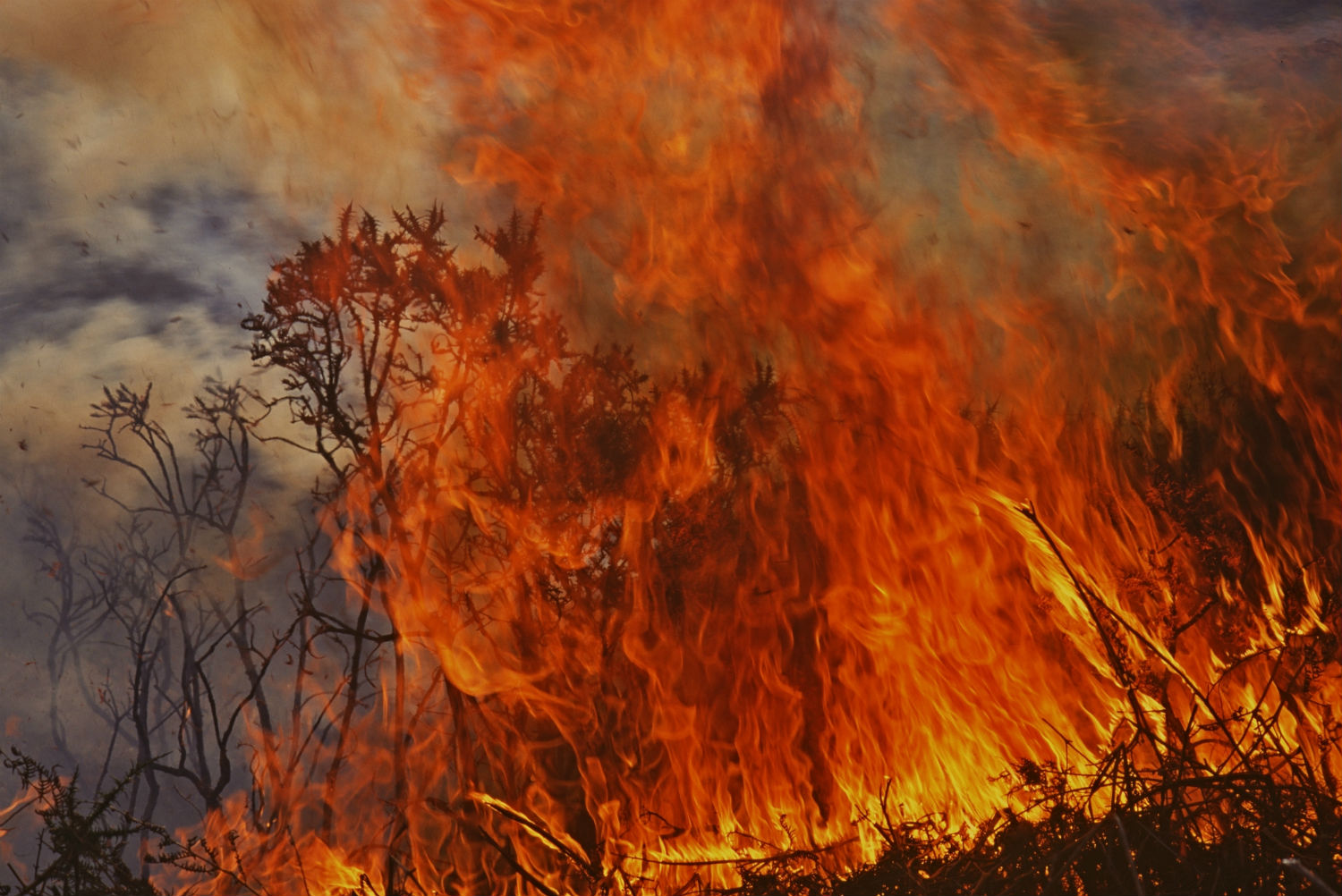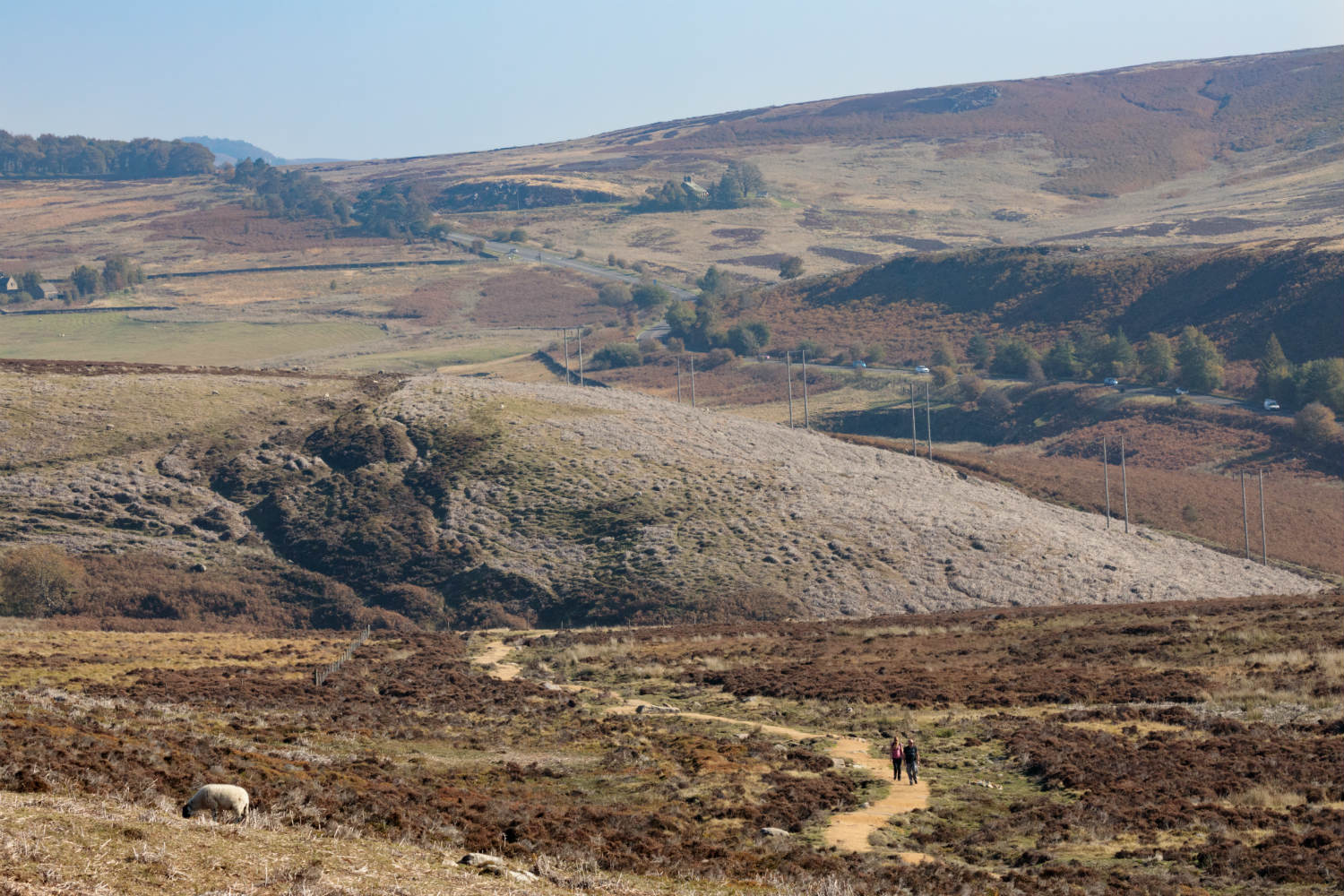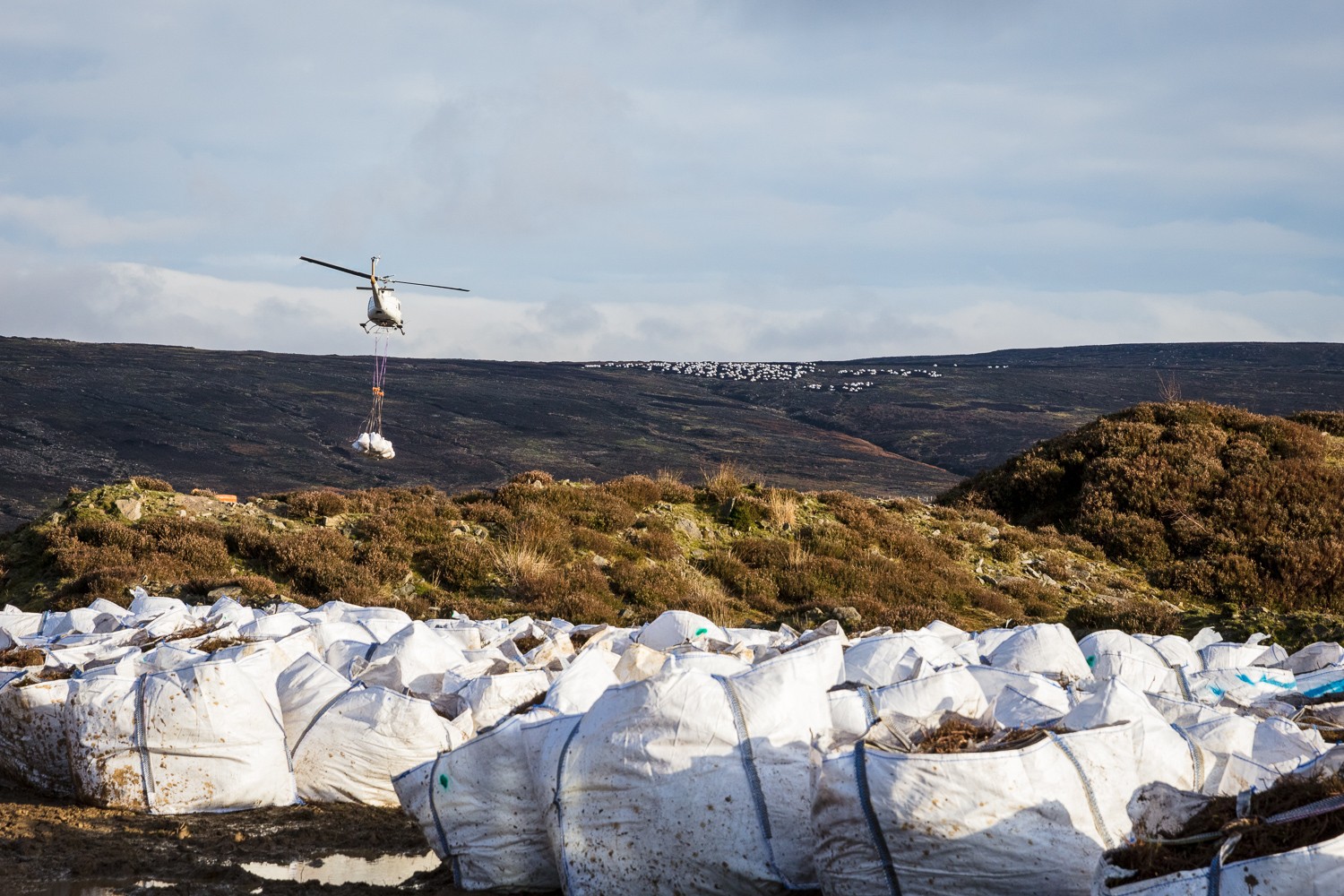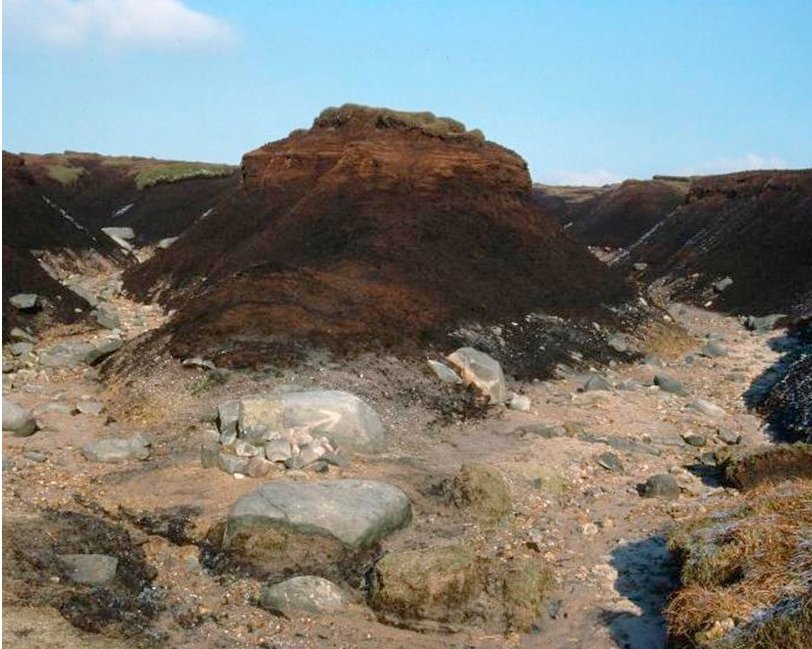Reasons for and problems with bare peat
Damage to peat happens through a mixture of natural and man-made processes
Bare peat is more vulnerable to further damage by the weather
Bare peat reduces the ability of bogs to store carbon as well as affecting the quality of our water supply and reducing biodiversity
Reasons for and problems with bare peat
Large areas of peat in the Peak District and South Pennines are bare of vegetation for a number of reasons including:
- Historic air pollution
- Wildfire
- Historic drainage
- Access
- Colonisation by non-native plants
Bare peat can result in sediment being washed into water courses, affecting the quality of our water supply and releasing carbon into the atmosphere as carbon dioxide. Lack of vegetation on the hills can also lead to water flowing quickly from the hills, increasing the risk of flooding downstream.
What causes bare peat?
Air pollution
During the 1800s the Industrial Revolution led to a huge increase in the number of factories in northern towns around the Peak District National Park.
Nitrous and sulphurous oxides released in the smoke from chimneys in South and West Yorkshire and Greater Manchester were deposited on the moors as acid rain.
Sulphurous oxides killed off sphagnum moss, the main peat-building material. This continued until the introduction of the clean air act in 1956.
Nitrous oxide emissions (from vehicle exhausts and agricultural practices) continue today. It doesn’t kill off sphagnum but the nutrient enrichment that occurs benefits grasses that out-compete the mosses.
Access to moorland
It is estimated that 6 million people visit the Peak District moors each year. The trampling of vegetation and loss of peat has impacts on the landscape character and wildlife, especially where footpaths are gradually widened as people avoid puddles and muddy patches.
Wildfire
Wildfires caused deliberately (e.g. arson) or by carelessness (e.g. discarding cigarettes) seriously threaten the fragile moorland habitats of the Peak District and South Pennines. Large areas can be destroyed very quickly.
Wildfires occur during the drier months. At this time, the vegetation and peat is drier and more flammable, making the moors very combustible. These fires can extend for several miles, burning deep into the peat. They decimate plant and animal life and can result in sterilisation of the peat, so that regrowth is not possible without intervention.
In addition, early spring and summer fires can have a disastrous effect on wildlife when birds are nesting and sheep lambing. Moorland fires pose a huge financial burden to the fire services and land managers because they are geographically remote and inaccessible. Specialised equipment including helicopters is often used to supply the water needed to control the fires.
In summer 2018 emergency services were called out to over 20 moorland fires in the Peak District National Park.

Weather
Bare eroded peat is more vulnerable to damage caused by weather conditions. With little or no vegetation to ‘knit’ the soil together the water table lowers and the peat dries out. The higher moors of the Peak District and South Pennines are regularly subjected to frost heave, with repeated daily cycles of freezing and thawing, lifting the surface layers of peat away from the main peat body.
In turn, this results in the soil being blown away by the wind and washed away by the rain during the following summer and is why 2.5cm depth of peat a year is lost over all of the areas of bare peat.
Drainage
After the Second World War there was a drive to increase agricultural production and land that was previously deemed unproductive, including moorland, was drained and turned to pasture.
This policy is no longer promoted and gully blocking has been initiated to re-wet moorland areas, through the use of dams.
Competition by non-native plants
Species such as Rhododendron, which are not native to the moorlands, have been introduced for differing reasons over the years. These species have few predators and can spread and out-compete native species.

Why is bare peat a problem?
Bare peat results in carbon dioxide being released into the atmosphere, contributing to worsening climate change. In the UK, 10 million tonnes of carbon dioxide are released into the atmosphere every year through damaged peatlands.
Bare peat provides a smoother surface for water to flow over than a healthy well-vegetated blanket bog. Water flows over it quickly, carrying material both over surfaces and within streams and gullies. In particular, it carries peat, which contains about 50% carbon, and heavy metals. Both pollute drinking water which requires expensive treatment before it reaches our homes.
Disappearing vegetation from peat also means that wildlife declines as habitat disappears. Wading birds such as the rare dunlin rely on vegetated upland sites to breed, whilst insects such as dragonflies, large heath butterflies and emperor moths need vegetation for food and shelter. This results in a lower diversity of plants and animals living on the moors.

